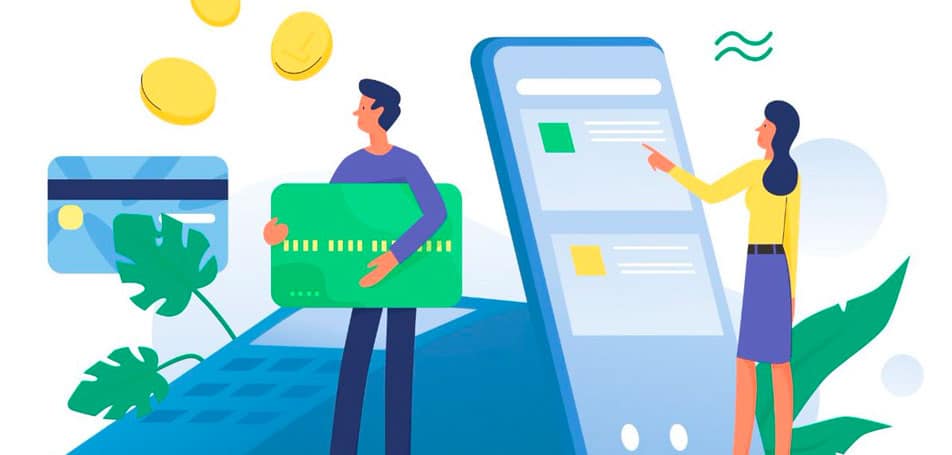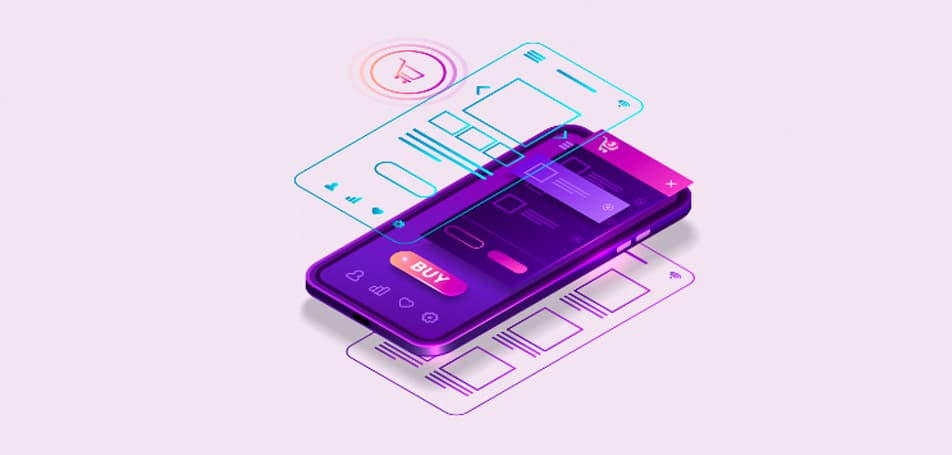
In the highly competitive world of eCommerce, it is important to put your customers first. From the way you design your website to the way you market, your entire process should be centered around your customers. Arguably one of the most important aspects of your site that should be human-centered is the checkout process.
When devising your eCommerce site, it is important to guide your customers throughout the entire shopping process. You can easily garner attention via great product photos and thorough descriptions, but all that work is for naught if your customers don’t complete the checkout process. It’s estimated that over 70% of consumers have abandoned their shopping cart at some point. By making your checkout process more human-centered, you will encourage customers to complete their shopping experience.
What Does “Human-Centered” Mean?
Human-centered content is different from user-centered content. The two terms are used interchangeably, but they have different meanings. A human-centered design is the process of creating content based on natural characteristics of human psychology. By this definition, there are a variety of conditions that can help make your checkout process more “human-centered.” From the colors and contrasts on the page, to the readability of the instructions, and the overall interaction the consumer will have with your checkout process, there are many small changes you can make that will make your website more effective.
Getting to Know Your Customers
To complete a human-centered design, you first have to get to know your customers. This may seem difficult with an eCommerce site, because you don’t see your customers face to face; however, there is technology that can fill the gap.
As you start the process of getting to know your customers, you need to push all your assumptions aside. If you start the process with a preconceived notion about your customers, you will not be able to gain as the data about your customers that you need. Instead, your judgement will be cloudy and based on your own ideals.
You can start to get to know your customers by looking at the analytics on your website. Find out who your customers are: are they older? Where do they live? What devices do they like to shop on? Since this article is about a human-centered checkout process, we can focus on check-out based analytics. Find out how many customers are abandoning their carts and at what step of the checkout process.
Once you have collected analytics, you should reach out to your customers via surveys. These can be over email or via a landing page on your website. The survey should be brief and should reward the customer for taking part. Give them a 10 or 15% off coupon for giving you their time. On the survey, ask about their checkout habits. Give specific multiple choice questions so you can easily parse through the data, but also leave room for write-in answers, so you can get important feedback about your checkout process.
Developing a Human-Centered Checkout Process
Once you complete your research, you can transform the data into development. The human-centered creation process has five notable steps: empathize, define, ideate, prototype, and test.
Empathize
Before you even begin to design a human-centered checkout process, you need to gain a real understanding of users and their problems. As stated before, you need to get preconceived notions out of your head. Instead, try to see your checkout process from a new customer’s point-of-view. One of the easiest ways to get out of your own mind is to get out of the office. When operating an eCommerce company, it can be easy to forget your customers are real people. Instead of hiding behind a screen, go into the real world and connect with your customers.
You can use social media to create a meetup with customers, so they can share their feelings and feedback with you. If that isn’t an option, create virtual meetups as well. Talk with your customers over Facebook Live, so you can get to know them a little better.
While you may feel compelled to focus on the middle of the road customer, you have to engage your extreme users as well. Get to know the grandmas who have trouble navigating their computer or your checkout process. Get to know the customers who buy from you more than once a week.
That doesn’t mean you should ignore your target audience. On the contrary, you should use all of this collected data to define your target audience. Who will be using your checkout process, what are their needs, and how can you solve their issues?
Define
Once you have empathized with your target audience, you need to define the problem they have. You also have to define the persona of your target audience. The persona you create should be a reliable and realistic representation of your key demographic. Therefore, you should determine their checkout behaviors, their motivations, and their needs.
There are a couple of methods you can use to define your audience and their needs. Personas is the big one, the customer problem statement is also helpful. This is a statement you can create based on your knowledge of your customers. Answer who they are, what they want, and why they can’t have it. This will help you determine the root cause of your customers’ problems.
You can also create a customer journey map. This maps out your customers’ checkout journey step by step to find out where the problem lies. You can learn a lot about the customer experience this way, because you essentially step into their shoes.
Ideate
Once you have defined your customers and their issues, you can start the process of ideation. This is essentially the process of creating an unlimited amount of ideas. By generating many ideas, you can start thinking outside the box. Often, a small doodle can lead to a break through.
Start your ideation process by rapidly sketching. It doesn’t matter if you are a great artist or not. Just sketch your own ideal checkout process. Think about your checkout page from a consumers point of view. What additions would you like? How should the page look?
Once you have started sketching, you can start actively brainstorming. Gather a variety of people from different backgrounds into a room and start collectively thinking about a positive solution. As the process starts flowing you should start to funnel the ideas into the crazy and the crazy not to try.
Prototype
Once you have landed on some great ideas, you can turn them into reality via prototypes. Prototypes should be faster, cheaper, and easier to build than your final checkout page; however, it should still give you a great idea of the final product.
During the prototype phase, you cannot forget about the customer. If there were customers you connected with during the empathize phase of the design, you should reach out to them. Give them a sneak peak of your prototype page and ask for feedback. This is especially important if you get stuck. This entire process should be human-centered, so don’t be afraid to ask for a little human help.
Test
The final step in the process is testing. Since you are trying to implement a human-centered checkout process, you need humans to test your new checkout page. Humans are complex, so you need to gather both quantitative and qualitative data. You should be able to find out if the new changes are successful, and if they are, why customers like the changes so much. The best way to find these important results is through A/B testing.
A/B Testing
When creating a human-centered checkout process, you need to keep your customers involved. If you create and implement a website without any customer feedback it could flop. A human-centered design is all about the customer, so it makes sense that their opinions are highly valued throughout the entire process.
The best way to get customer feedback during the ideation phase is through A/B testing. An A/B test is a randomized experiment that uses two or more variants of the same webpage. By utilizing analytics, you can use data to determine which variant customer prefer.
One of the best tools for A/B testing is Google Analytics. Google will use its power as the world’s largest search engine, to give users the different versions of your website (either A or B). Then, it will automatically upload the data to your Google Analytics, so you can determine which website design is most successful.
When A/B testing, you should test only one change to your checkout process at a time. For example, if you think customers will increase if you: a) change your color scheme and b) add PayPal as a payment option, you should test just one of these at a time. For instance, instead of testing both the color scheme and the payment process at the same time, you should only test the color scheme. Once that is completed, you can then test the addition of PayPal with the new color scheme. By testing one variable at a time, you are ensuring you are creating the best checkout process possible. Testing more than one variable, will complicate your results.
Once you have determined the one variable you would like to test, you should create a hypothesis. Let’s go back to the payment option. Your hypothesis should be: by adding PayPal as a payment option, more customers will complete the checkout process. Your hypothesis is an educated guess that can be validated or invalidated by the data from the A/B test.
After creating a hypothesis, you can create your A/B test via Google.
- Start by going to your Optimize Account, find the experiments page.
- Click “Create Experiment,” and enter an experiment name.
- Enter the URL of the webpage you would like to test.
- For the purpose of this article, it should be your checkout page.
- Once you have entered the URL, click “A/B test” and then “Create.”
Once you have created a test, add your variants. In the bottom right corner of the screen you can enter a variant name, then click “add.”
Once you have added a variant, you can edit the webpage with your new additions. You can also decide who and when you want to target. Since you are testing to see if your checkout process is human-centered, you should target any customers that come your way. Once you have set all of these parameters, you can start the experiment.
The test should run for as long as it needs for you to get the best information possible. If you only have a few dozen visitors a day, you will need to wait months for proper data. However, if you have thousands of visitors a day, you may need to run the test only for a few weeks to collect the data you need.
Using A/B Test Data
After you have collected your data from your A/B testing, you can start to parse the information. As a company, you will need to decide what results are worth the change. Let’s go back to our payment example. Let’s imagine you just ran an A/B test on whether adding PayPal will make your checkout process more human-centered. The results from the test show a 25% increase in checkout completion when PayPal is an option. Do you implement PayPal right away, or should you test other options first?
If you think 25% is too low, you may want to test other options as well. Instead of offering just PayPal, maybe you should test offering PayPal and Amazon Payments. If you aren’t sure if offering both will work – talk to your customers. Again, this entire process is about the customer. If you want to have a human-centered checkout process you need to reach out and talk to actual humans.
For more help making your eCommerce business user-friendly, contact us at Wagento.com.















